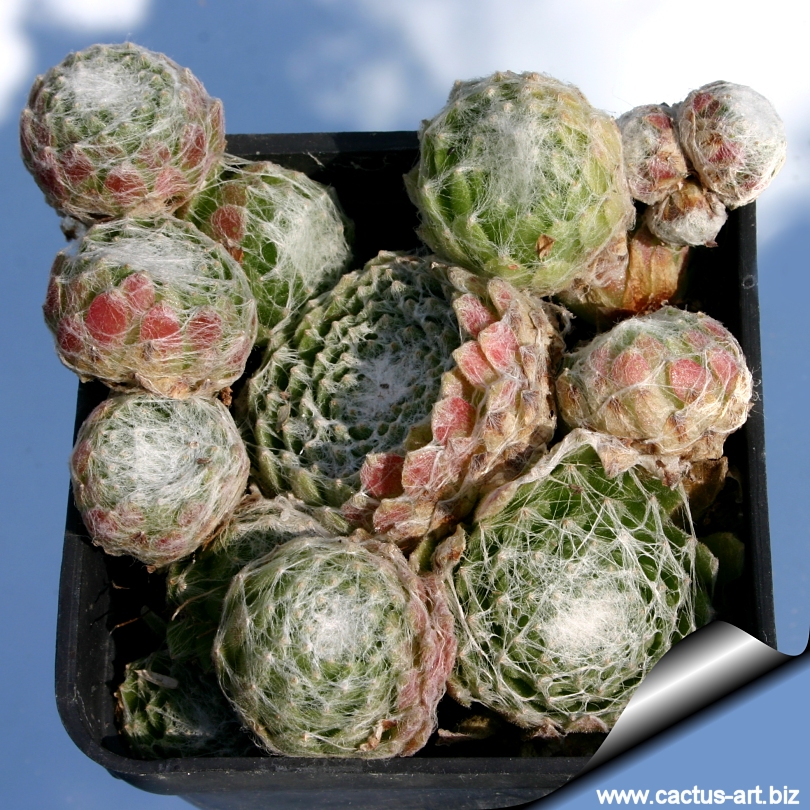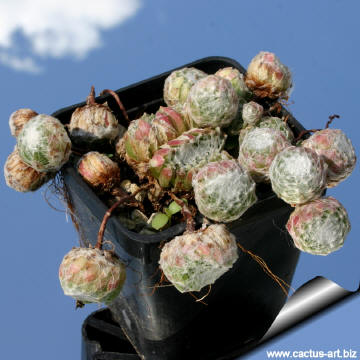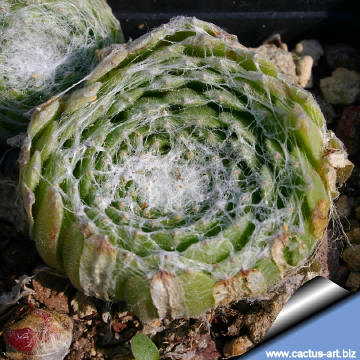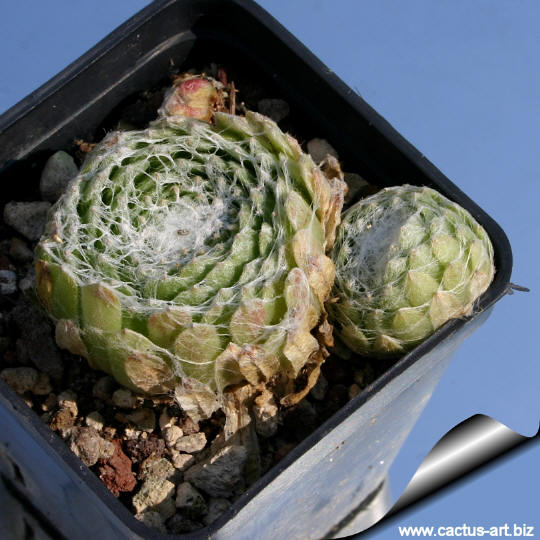|
|
|

Sempervivum arachnoideum
|
|
Description: S.
arachnoideum is a small, evergreen perennial succulent that grow
in very tight rosette forming mats up to 30cm (or more) in diameter,
often cultivated in rock gardens. It is a very variable species. There
are even a dwarf and a crested form and they all hybridize easily for
new varieties.
Rosettes: Each rosette is small and may have up to 50-60 leaves.
Some form clusters of 1- 2 cm balls, others have larger balls. The tips
of the leaves are connected together by a very fine webbing that looks
just like cobwebs thin, but there are many different clones. Some are
very furry other slightly furry, there are also types that are red, some
maroon, others green.
Flowers: Pink (usually) but also white or bright-red about 1-2.5
cm across. Flowers are raised on thick 20 cm tall stems and
hermaphroditical (having both male and female reproductive organs)
Blooming season: Summer, lasting into early autumn. The rosette
that bloomed then dies after setting seeds.
Curiosity: In Europe, the
Houseleek (Sempervivum) are sometimes used in roofing, with the plants
grown in between roofing tiles; they are believed to ward off
lightening.
|
 |
 |
|
Advertising
|
|
|
|
|
Family: Crassulaceae
Scientific name:
Sempervivum arachnoideum L.
Origin: Mountain of Europe from the Pyrenees to the
Carpathians where many variations occur naturally.
Common Names include: Cobweb Houseleek, Hens & Chicks
Etymology: Its name arachnoideum refers to ancient Greek "arachnion"
(αραχνιον),
mening "spider" plus the adjective suffix for nouns
"oides" (-οειδες)
meaning "like" or "resemble"
for its furry central rosettes, resembling spider webs.

|
|
|
|
Cultivation: Always an interesting plant and relatively easy
to grow in container or in the rock garden but resents winter wet. The
'cobweb' catches and holds the rain so that rot is likely to set in.
Frost Tolerance: Hardy at least to -12°C (or less). After the plant
blooms and sets seed it will die, but there will be many offsets to take
its place. It need full sun to light shade and tolerates shade, but a
sunny spot is nicest, though in warmer climates it needs protection from
too much sun because it is not very heat tolerant.
Require a well drained succulent soil mix. It takes little water & could
rot if watered too often. During the growing season, the plants are
watered and allowed to dry slightly before watering again. Although they
can take a great deal of drought, they seem to do better with regular
(but moderated) watering. During the winter months, plants are watered
very little.
Outdoors it will spread itself through narrow locations between rockery
stones. It does not prefer rich loamy soil; gritty dirt with pea gravel
suits it. Excess moisture can damage the plant in winter and it will
benefit from being brought into the shelter of the greenhouse or cold
frame.
Propagation: Is very easily
propagated by division of larger clumps or by offsets.
Photo of conspecific taxa, varieties, forms and cultivars of
Sempervivum arachnoideum.

 |
|